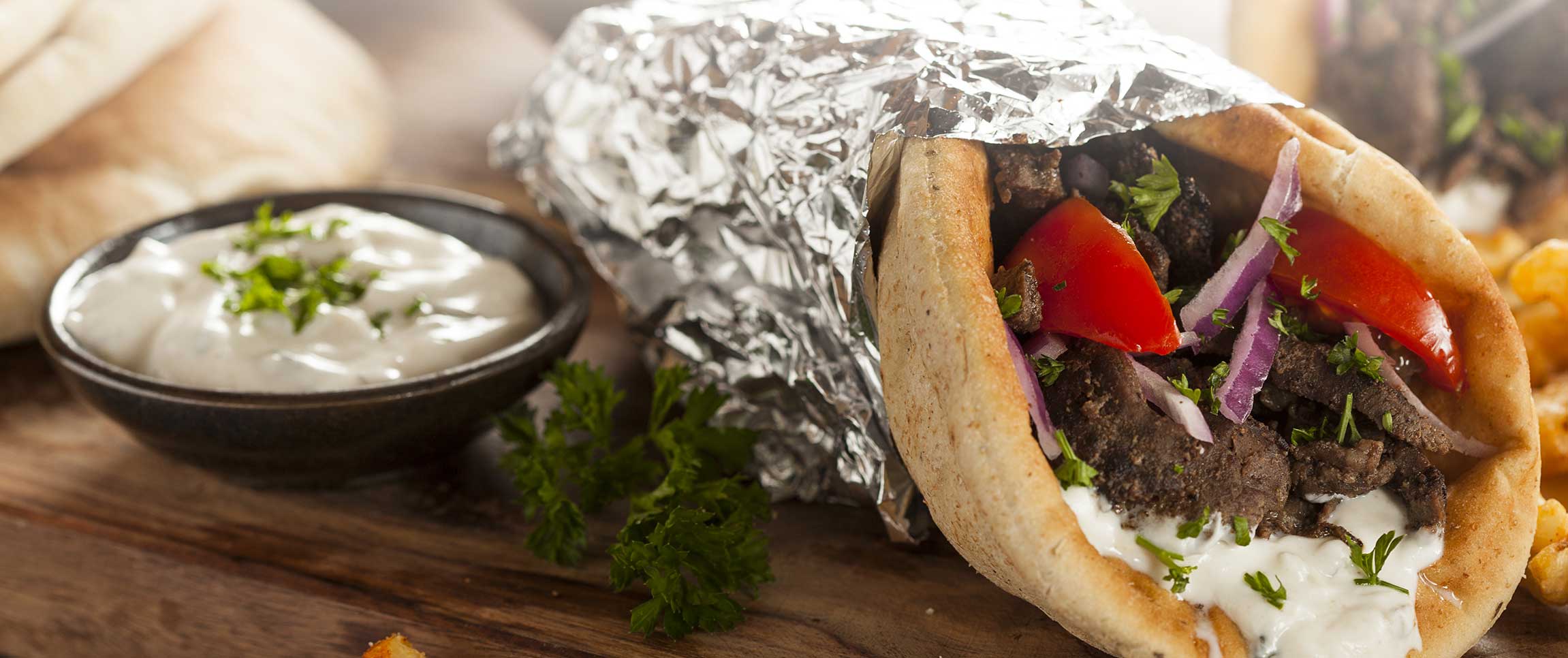From Greek wines to fanciful desserts, Greek food is enjoying a renaissance as part of the healthful benefits of a Mediterranean diet. Here’s where growth in this market is occurring and ideas for your menu.
The Spirits Market
Ouzo, the anise-flavored aperitif and retsina, the wine of pine-lovers everywhere, may not be for the faint of heart, but is still a favorite.
Aside from those two Greek spirits, though, the focus now is on Greek whites: Assyrtiko from the volcanic soils of Santorini, has long been popular but it’s now being released in delicious blends as Greek wine makers have found that Assyrtiko plays well with other grapes.
Craft cocktail makers at the trendiest bars are also launching libations featuring mastiha, a liqueur seasoned with mastic, a resin from a small tree that’s native to the Mediterranean region. The name of the resin and the liqueur is derived from the Greek “to chew.” The flavor is a refreshing combination of cucumber, pine, anise and fresh herbs.

Fast Casual
Although most major cities have at least one or two neighborhood Greek restaurants, the fast casual market is ripe for Greek food. Many of these restaurants offers pita and wraps, choices of fillings, and traditional Greek favorites such as spanakopita in the fast casual restaurant style that has become the hottest trend in dining.
Salad
A refreshing change from the ubiquitous Caesar salad, the authentic Greek salad is more of a composed salad without lettuce. Instead it has tomatoes, black olives, oregano and feta cheese on top. Some non-Mediterranean restaurants have made the Greek salad into their “house” salad, garnishing it with dolmades and adding interest to their menu without too much extra effort.
Cheese
Feta is almost as ubiquitous as goat cheese these days because of its many uses. But there are other cheeses from the region that are making inroads. Halloumi cheese (a goat and sheep’s milk cheese that is actually a product of Cypress) has long been used in Greek cooking. Word has gotten out that Halloumi can be placed on a grill and browned without losing its shape or melting into the fire. Food lovers are finding new ways to add the “grilled” cheese to their favorite dishes. A summer issue of Bon Appetit magazine featured a winning combination of Halloumi mixed with another “hot” ingredient – Israeli couscous and grilled corn.
Hummus
Yes it’s been an appetizer staple for years now, but as customers seek out new flavors, restaurants are testing more inventive hummus varieties. Over the past few months we’ve seen pizza hummus, beet hummus, white bean hummus, coconut curry hummus, and even chocolate-covered strawberry hummus. The base for this dish is so simple—basically chickpeas, tahini, lemon juice and olive oil—it makes it a perfect canvas for layering unique flavors.
Beyond Baklava
Although everyone immediately thinks of filo for baklava, there are hundreds of ways to use the thin prepared dough for desserts and savories. A traditional Greek custard pie is made of filo dough with a custard filling that has been thickened with semolina, the endosperm of coarse durum wheat, giving the custard a distinct texture. Filo is also packaged in a shredded form that can be used to nestle some of the lesser known Greek desserts.



